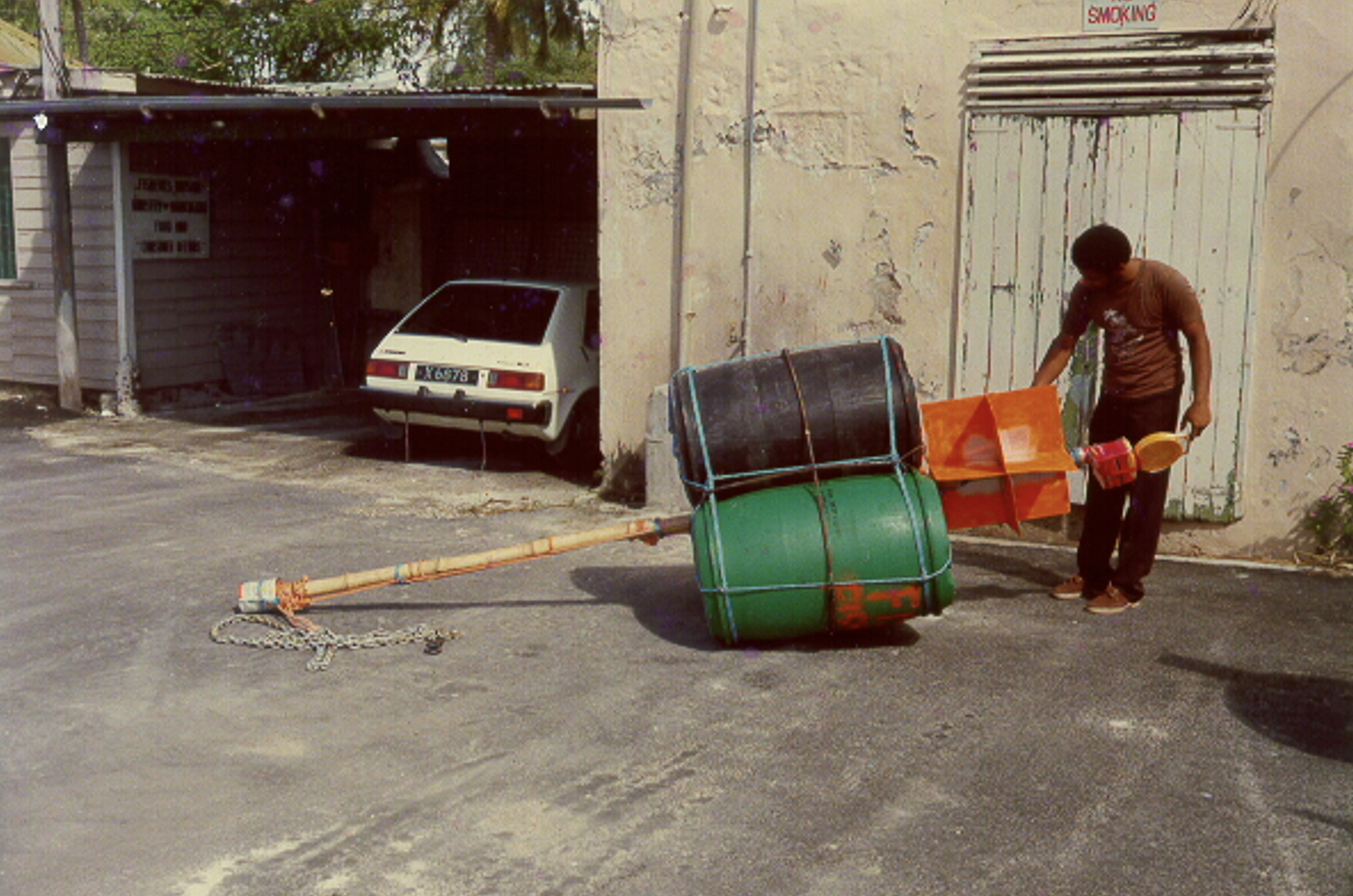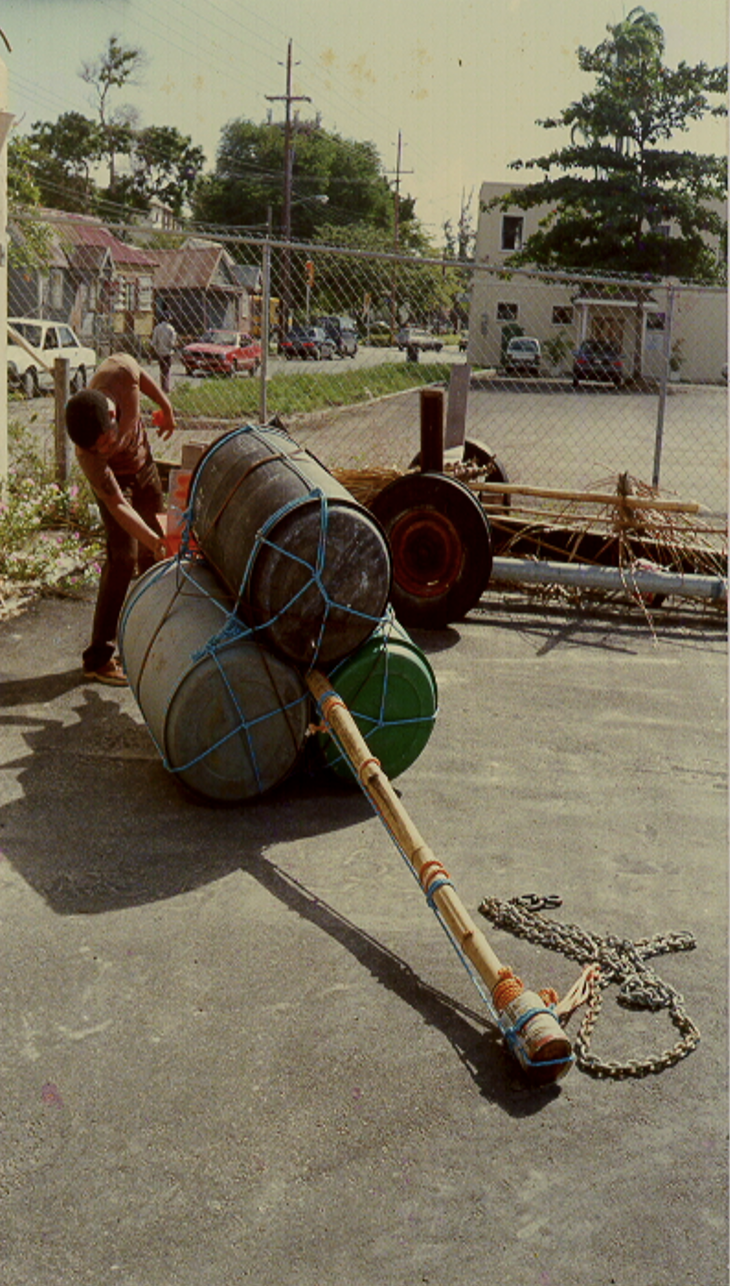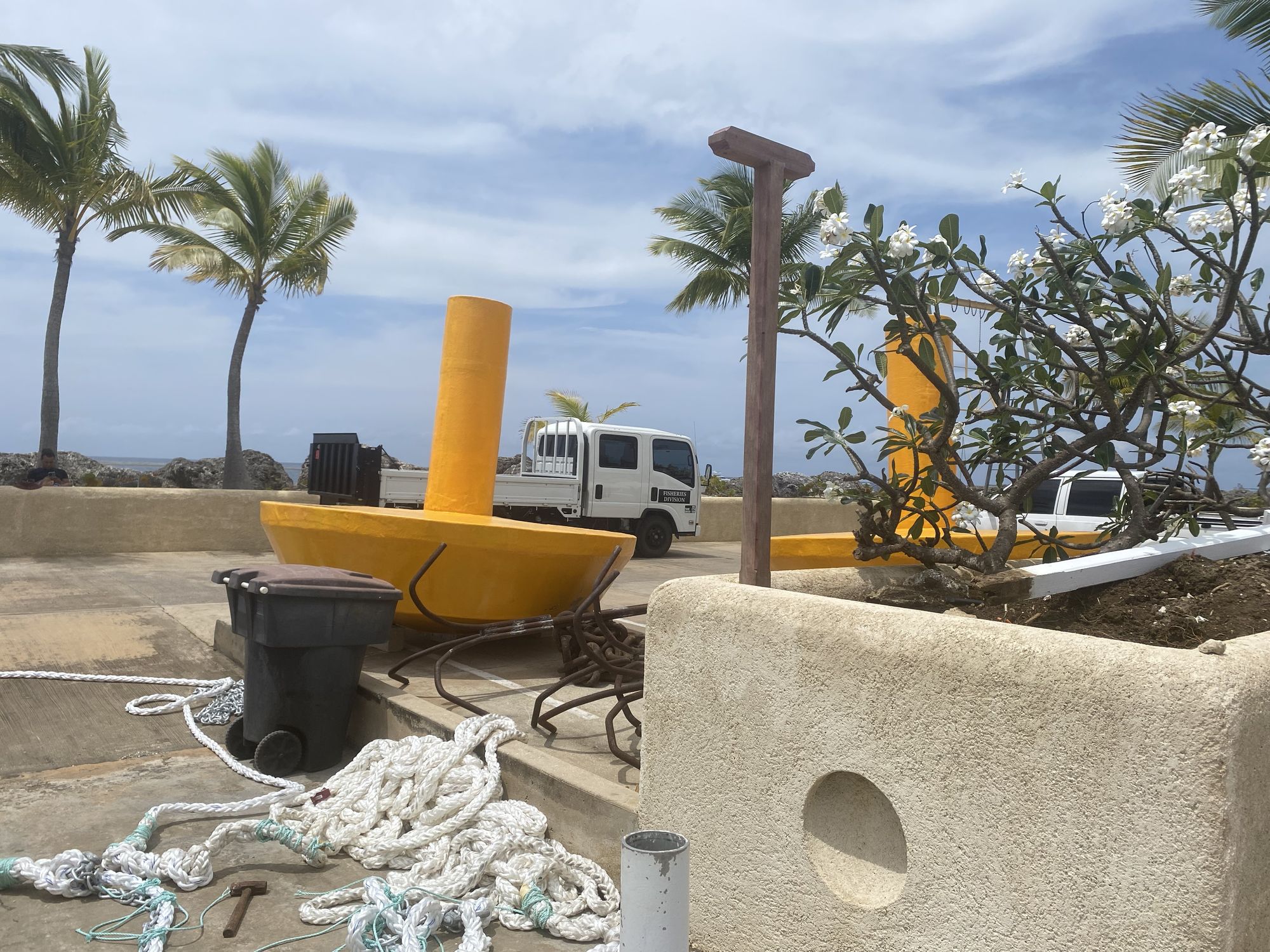Fish Aggregating Devices (FADs) are floating objects that are designed and strategically placed to attract pelagic fish. Moored fish aggregating devices (MFADs) are promoted throughout global small-scale fisheries as tools to enhance livelihoods and shift fishing pressure onto offshore resources.
The use of FADs as a means of increasing fish catch rates has been used throughout the world for centuries. The screeler is the only FAD traditionally used by Barbadian fishers. The earliest suggestion for using a moored FAD in Barbados appears to have been made by C. F. Hickling in 1949. He suggested using a simple Malaysian FAD design known as an “unjang” that would be composed of old rope and palm fronds. However, there are no records to suggest that the Barbados Fisheries Division ever tried to introduce this device during their intense experimental fishing programme in the 1950’s. It was not until the late 1960s that moored FADs were the introduced in four states Anguilla, Barbados, Bonaire, and Curaçao.
In the late 1980’s, the Barbados Fisheries Division commenced a programme under the Crown Agents programme to test the feasibility of installing permanently moored FADs around the island. The first experimental FAD was deployed in November 1989 and was constructed of locally available inexpensive materials. The upper end of the FAD was comprised of three plastic drums arranged around a central length of bamboo to provide buoyancy. The FAD was deployed in a water depth of 540 meters, at a location six miles west of the deep-water harbour in Bridgetown. Chain and rope was used to anchor the apparatus in place. A radar reflector and beacon were attached to the top of the FAD to ensure easy detection of the apparatus by fishers and for general navigational safety.

A local screeler (as described previously) was tied to the buoyed structure at the surface and an arrangement of local screelers and old fishing mesh was attached to the mooring line at a depth of approximately 20 meters. The FAD was left at the location to allow a marine colony to develop. The FAD was monitored periodically and early results seemed promising. For example a reliable fisherman reported catching a 38 lb Dorado at the FAD within two days of deployment and flyingfish spawn was gathered from the surface “screeler”. In the first weeks of deployment, a number of fishing boats were observed to be fishing in close proximity of the device. One fisherman reported catches of Kingfish (Acanthocybium solandri) and a Dorado dolphin, while other skippers were thought to have caught fish but did not report the catches.

Experimental fishing trips were made around the FAD by the research vessel of the Fisheries Division using a pair of trolling booms fitted to the vessel. The first trip resulted in a catch of four wahoo. Large numbers of flying fish were also observed close to the FAD and five other species of ocean fish were also observed below the main buoy by the subsurface screeler.
An early problem that occurred was that the bamboo used to raise the Radar reflector and flashing light unit was broken by the constant rolling action of the sea. This problem was remedied by simply using a shorter length of bamboo.
Within a few months the FAD disappeared from it’s mooring. Information was received that the mooring ropes had been deliberately cut but it was never ascertained why or who carry out this act. The experiments with moored FADs were subsequently abandoned.

A pilot involving the installation of moored FADs to enhance the catchability of pelagic fish for coastal fishers around the island commenced in late 2021. To date 13 of the 17 proposed FADs have been installed at various points around island including one on the East Coast. The FADs were fitted with satellite buoys to monitor key oceanographic parameters and fish assemblages at the FADs. The satellite buoys will be used to track the FADs to facilitate their recovery if they break away from the mooring. The deployment of two private mFADs were also reported to the Fisheries Division.
Technical expertise and support will be required, and experience will be gleaned from the CRFM (2015) Draft Sub-Regional Management Plan for FAD Fisheries in the Eastern Caribbean.
Recent developments include the approval of the Sustainable Fisheries Management and Development (Fish Aggregating Devices) Regulations on 18 May 2023.






